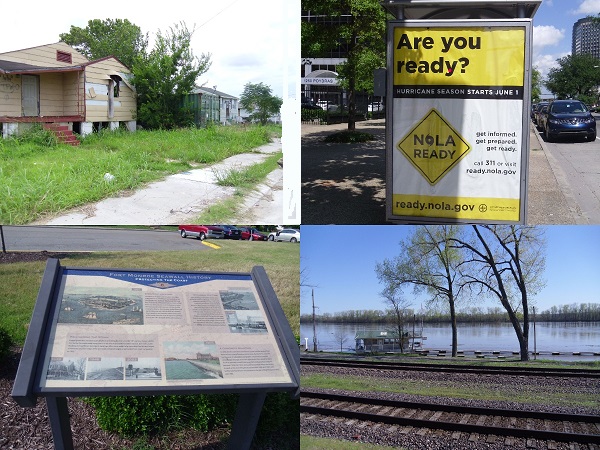| Back to Back Issues Page |
 |
|
Useful Community Plus July 30, 2020 |
This month we worked on three projects of special note. First, this month we answered a visitor question about the signs of neighborhood decline, and were amazed that we didn't think of writing this article before! There is much more that could and should be said about this topic at the heart of community development, but check out our first article in what will become a series. Second, we created a new set of links to the pages on our website that are of particular interest to congregational leaders. In the future you can access these and other files pertinent to specialized interests through the links in the yellow box on our sitemap page. Third, here's is the biggest project of the month. In the second of three pages on Big Ideas that we are writing in 2020 for our community development ideas page, this month we launched one on the implications of climate change for local planning and community development. There you will find 17 multi-part questions your community should ask to evaluate both how our changing global climate will impact your own neighborhood and whether the preliminary answers to these questions signal a major planning project ahead or a series of minor adjustments to your existing land use regulations and municipal operations. Let us know what you think. In that article, we avoided more basic questions that may apply to your community as a whole or in part, including an elementary level understanding of the climate change issue and its validity. You might refer the skeptics in your community to the excellent New York Times primer on climate change, including how we know it's real, what we as a society can do about it, and whether and how individual actions matter. The Times writer suggests a rough approximation of the solution. About a quarter will come from each of the following actions: generate electricity without emissions (solar, wind, nuclear), run everything possible on the clean electricity, develop new technologies to address the "hard to electrify" activities such as planes and trucks and glass or cement production, and improve agricultural practices to reduce/eliminate deforestation and reduce beef consumption (or methane production) and food waste. Lastly, we note that we answered two other questions from visitors this month, the first one being about a special exception for commercial tree company requested next door to residence. We also commented on feeling harassed by a code enforcement officer.
This month we wanted to share some especially wonderful reading we have noticed. Here are a few of our favorites. We loved a Bloomberg news article on how to understand your city budget. In both style and substance, this engaging presentation will grab high school students and adults to pull them into the mystery of how your city is spending its tax dollars. If your community organization is quite active on social media, look at this article on conducting a social media audit. As a follow up to last month's article on racial equity, we found a good online resource. Through this page on equity and inclusion you can discover some helpful resources for racial and other diversity work in your organizations and communities. This page is only a gateway; you have to click the links at the bottom to find the actual resources. From our perspective, the next article is sort of stating the obvious, but many of your residents won't understand the centrality of housing to most racial equity questions. See the article on how systemic racism starts and ends with housing. The 2020 edition of the now annual Out of Reach report on housing affordability in the U.S. shows that there is not one single county in the U.S. where a minimum-wage worker can afford a two-bedroom apartment and keep housing costs under 30 percent of income. Many European cities are showing the same mismatch between rent levels and wages on the lower end of the scale. For some inspirational stories about successful rural projects, check out the resources of the Center for Rural Strategies. If urban parks are more your thing, read about the lessons learned from one of our favorite places to be on a summer afternoon, New York's Bryant Park. This powerful essay highlights how you don't have to do everything all at once; in fact, more incremental changes can help you find the right solutions to revitalization of parks, neighborhoods, and business districts. We also liked a powerful article on Africa's response to coronavirus, in which the Gates Foundation advances the important thesis that a country doesn't have to be wealthy to be healthy. Let's make that premise hold true for neighborhoods as well. Special Note: If you are in the U.S., please work to obtain the highest possible rate of completion of the decennial census in your community. Those numbers influence your community's eligibility for all sorts of government programs and private sector decisions, in ways that you can't even foresee. Yes, many sources urge the same thing every 10 years and you might be tired of hearing it, but this year the pandemic has really suppressed response. Our next monthly email will appear in August. Feel free to forward this email to a friend who may be interested, or to reply to this e-mail. |
| Back to Back Issues Page |


